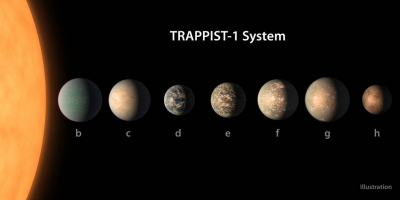ANTRIKSA — Other world search missions are now no longer dominated by the West and Europe. China as a new player who is rising great in its space mission is now directing its technology to the ‘foreign earth’ that may be scattered out there.
A China-proposed mission would search for a nearby potentially habitable alien world. They will launch a spacecraft to take ultra-precise measurements of how an orbiting planet makes its star wobble.
For the mission called Closeby Habitable Exoplanet Survey (CHES), the scientists will use a method called micro-arcsecond relative astrometry. This technique involves measuring the position and motion of the star very precisely against a reference background star to detect disturbances by the exoplanet’s gravity as it orbits its star.
Scroll to read
Scroll to read
<!– – –>
<!–
This method will give an estimate of the mass of the exoplanets (outside the solar system) and the distances at which they orbit their stars. This in turn can reveal whether these exoplanets have the potential to host life or not.
The European Space Agency’s (ESA) Gaia space telescope used the same method to create a 3D map of the one billion stars in the Milky Way. Other planet-searching missions, such as NASA’s Transiting Exoplanet Survey Satellite, use a different technique, called the transit method, which looks for a decrease in a star’s luminosity as the planet passes by. This method requires that the planet orbits at the edge of the observer’s position.
CHES will be much more focused than ESA’s Gaia mission, targeting 100 sun-like stars within 10 parsecs, or 33 light years from Earth. It may be able to detect potentially Earth-like planets in the habitable zone around these stars.
When surveying a relatively narrow selection of stars, CHES will be able to study the exoplanetary system comprehensively. “The hunt for habitable worlds on nearby sun-like stars will be a major breakthrough for mankind, and will also help humans visit Earth’s twin and expand our living space in the future,” said research professor from the Purple Mountain Observatory at the Academy of Sciences. China (CAS) and CHES mission principal investigator Ji Jianghui told Space.com, Thursday, June 2, 2022.
“To date, more than 5,000 exoplanets have been discovered and confirmed, including about 50 Earth-like planets in the habitable zone, but most of them are hundreds of light years from Earth.”
CHES will carry out its work from the sun-Earth Lagrange Point 2, about 1.5 million kilometers from Earth. This point is also where NASA’s Gaia, Spektr-RG, and James Webb Space Telescope missions currently operate.
“CHES will be a wonderful addition to exoplanet exploration,” said Elizabeth Tasker, a professor at the Japan Aerospace Exploration Agency.
“While the number of potential targets is small, measurements of the masses of planets orbiting our neighboring K-, G- and F-type stars, would be a valuable addition to our current data and a step toward identifying habitable worlds, Tasker said.
Tasker says that while CHES cannot probe the surfaces of these planets to see if they have an Earth-like environment, mass measurements can provide an important indicator of which planets can, or definitely are not, Earth-like. Higher-mass planets will attract thicker atmospheres than Earth, potentially containing gases such as hydrogen and helium, which are excellent at trapping heat.
The potential habitability of terrestrial planets from the CHES discovery could be further investigated by other teams. For a planet that can be observed crossing its star, the spectrum of light passing through the atmosphere of an exoplanet can be analyzed to reveal information about its composition.
The mission appears to be competing with other exoplanet proposals from the Shanghai Astronomical Observatory, also under CAS. The mission, dubbed Earth 2.0, will use the transit method to monitor 1.2 million dwarf stars in an effort to detect exoplanets and narrow the search for Earth’s twin. The Earth 2.0 mission will also operate at Lagrange Point 2.
The two Chinese proposals are part of the third round of the Strategic Priority Research Program under CAS. These two proposals, along with mission proposals in other fields, including extreme energy physics, planetary science, heliophysics, and Earth observations are expected to be reviewed soon.
-“).attr({
type: ‘text/javascript’,
src: ‘https://platform.twitter.com/widgets.js’
}).prependTo(“head”);
if ($(“.instagram-media”).length > 0)
$(”


